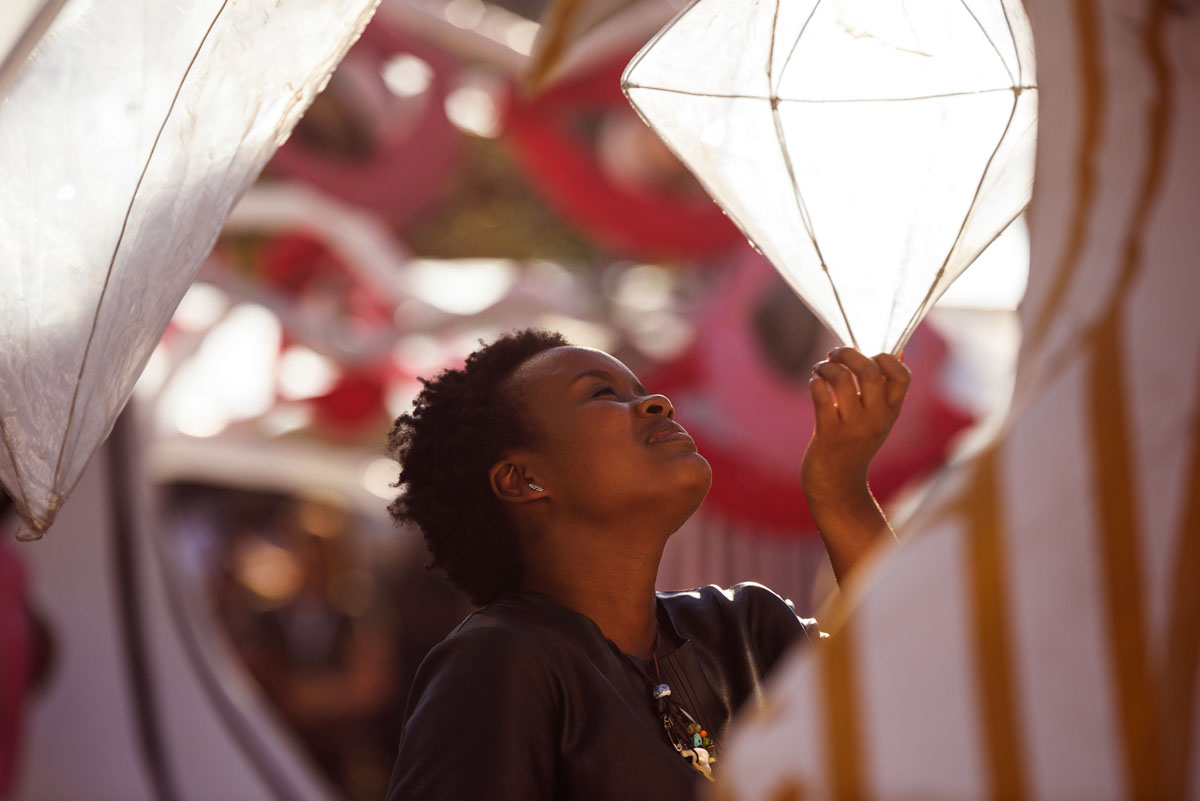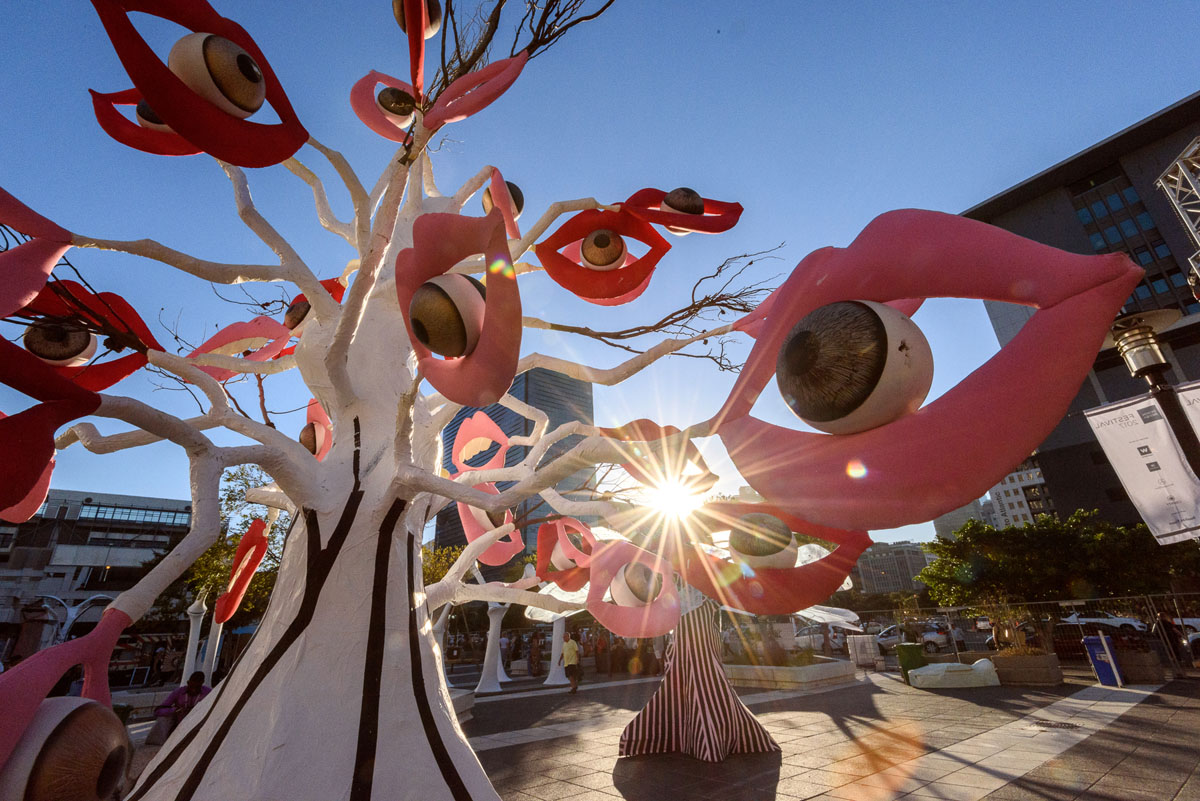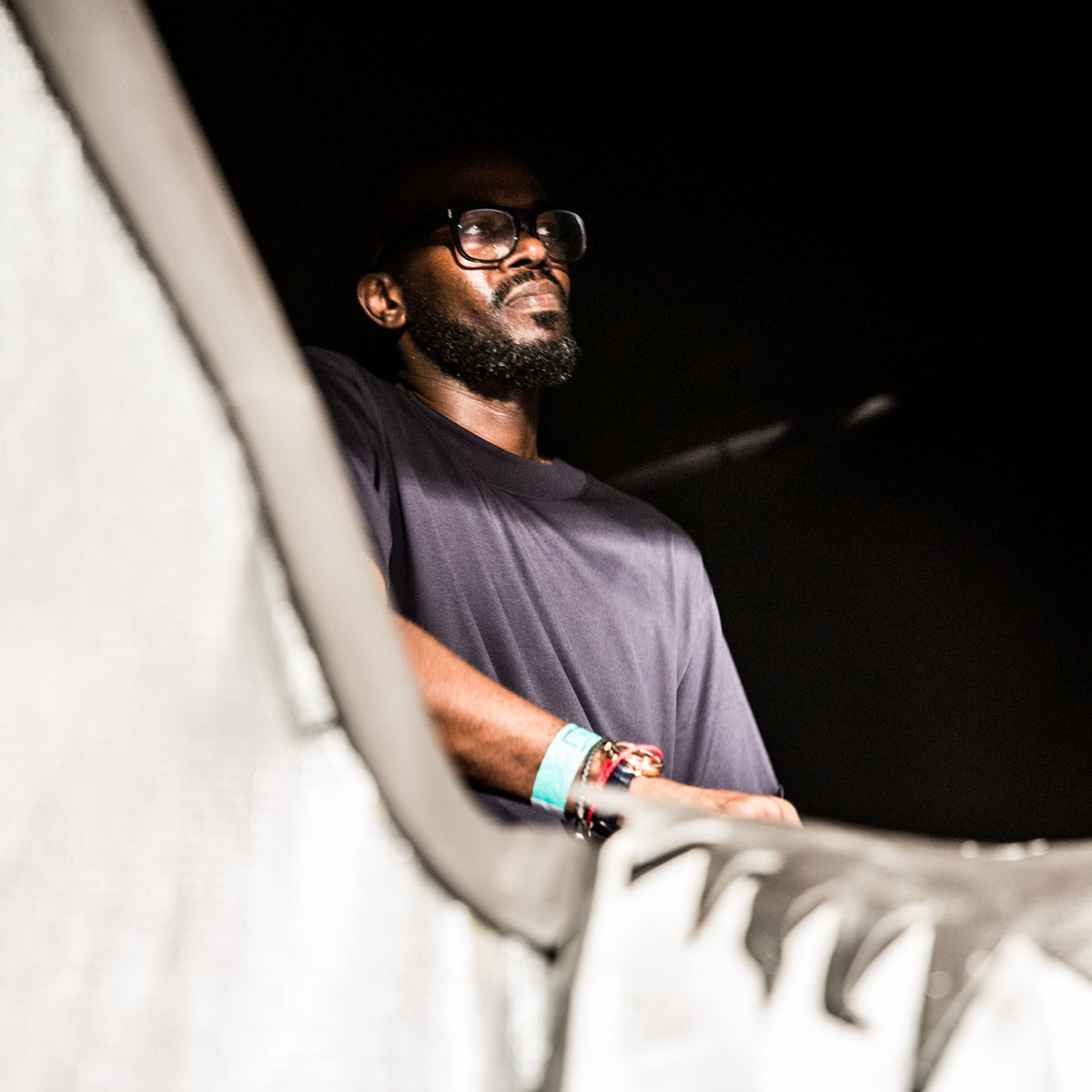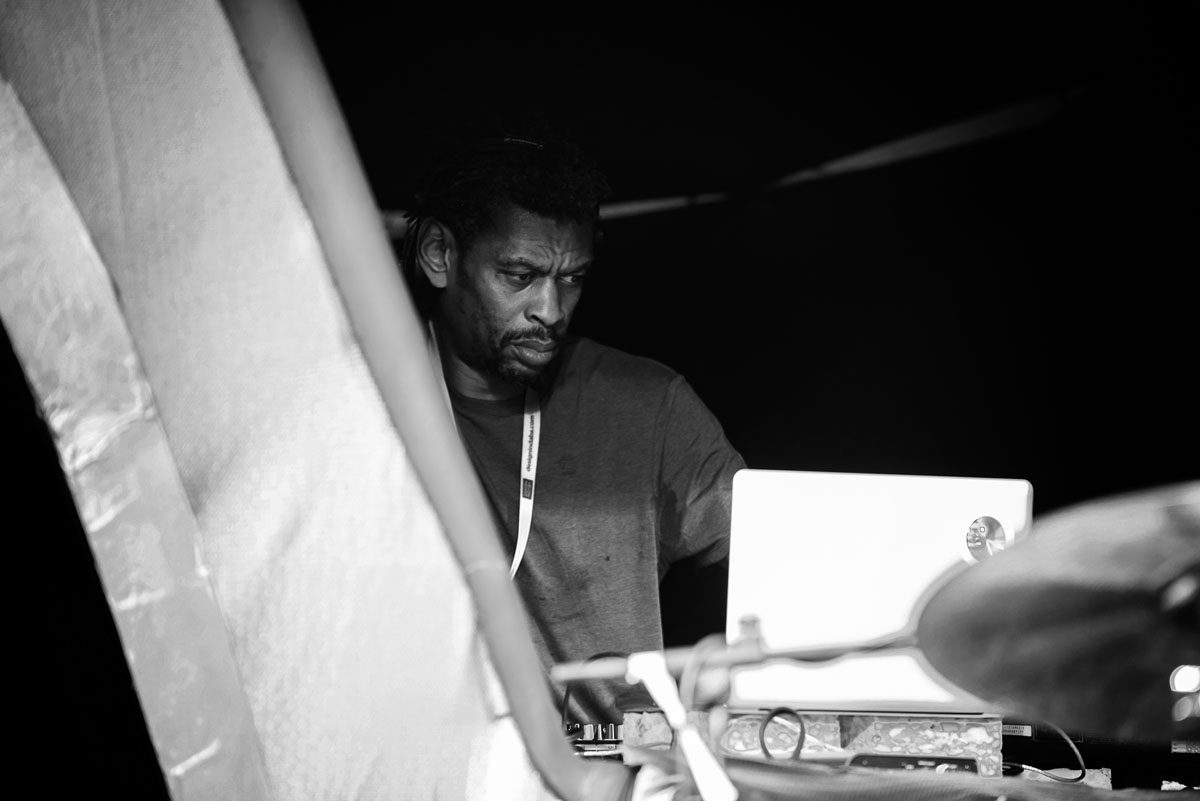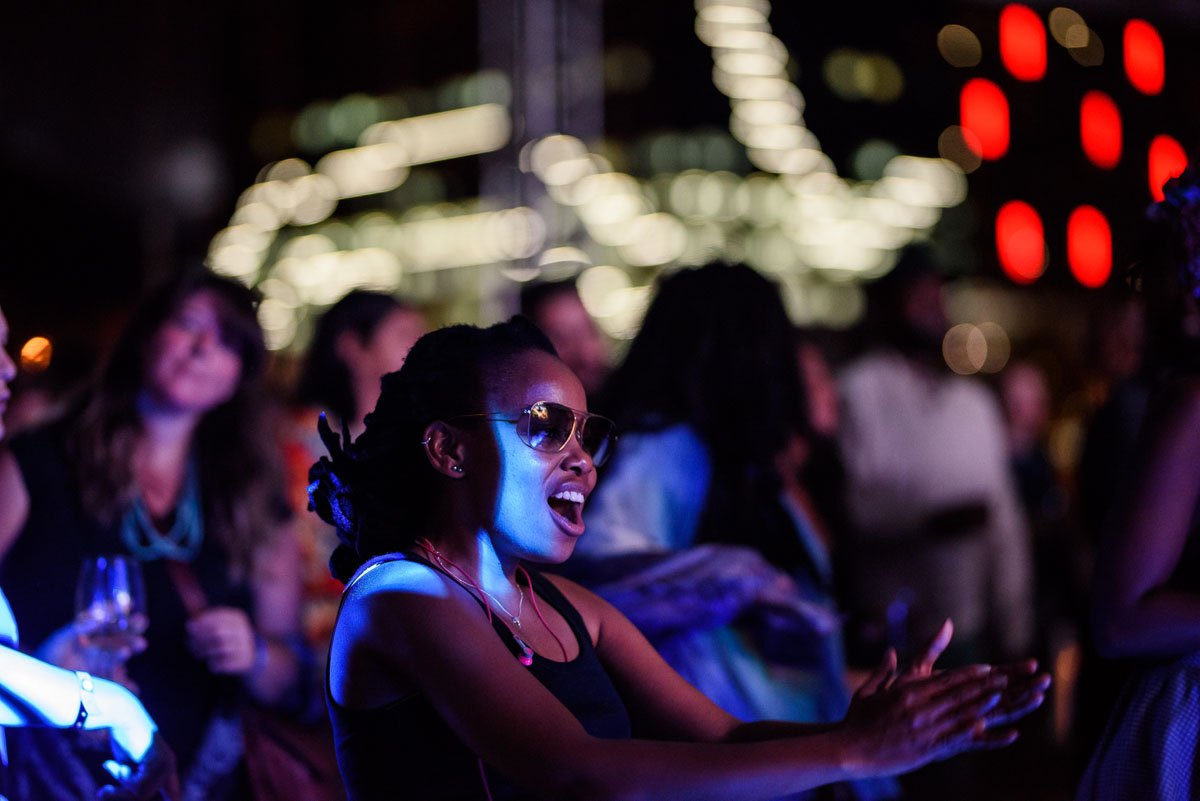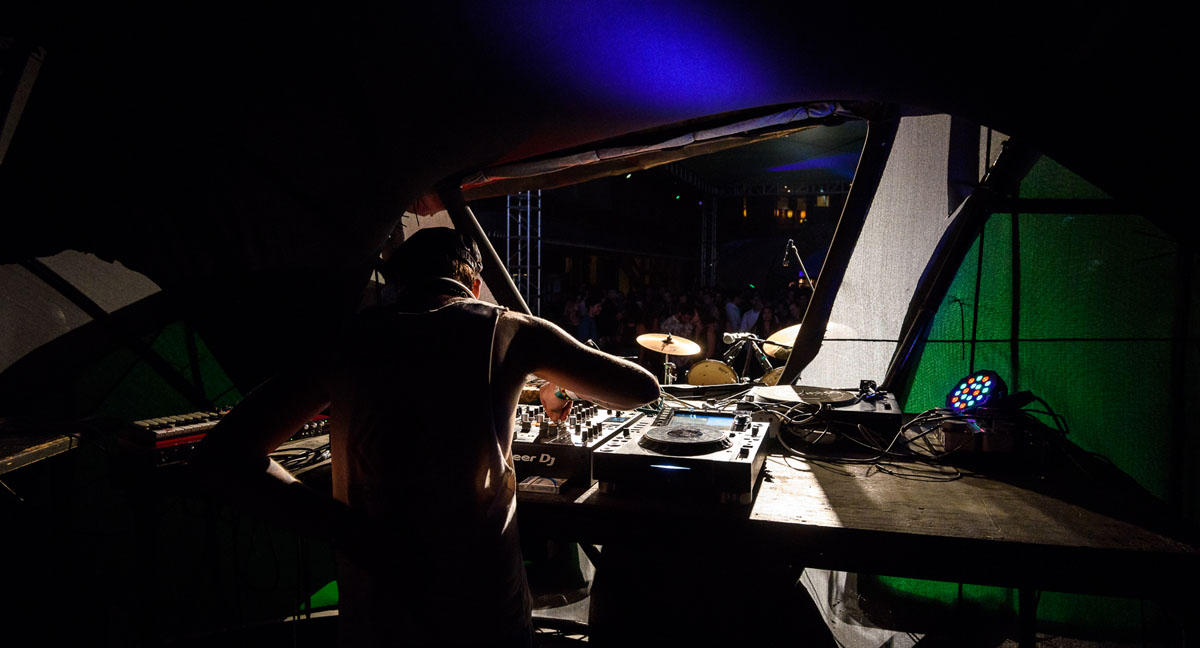The Senegalese fashion designer welcomes us into her fantastical Nightscape at Design Indaba
The aliens have landed on the outskirts of Cape Town. Upon entering an industrial warehouse we’re soon surrounded on all sides by curious creatures coming to life, from flies the size of cars to huge trees sprouting eyeballs and lips. And in the middle of this surreal scene is Selly Raby Kane. Wearing one of her signature embroidered kimono jackets and surveying her creations through rose tinted shades, it's clear the Senegalese fashion designer is in charge here. She talks to her team, one painting paper mache shapes, the other anglegrinding metalwork, before sitting down for a chat. “It’s been a lot of work,” she confides, somewhat understating the mammoth task she has undertaken for Design Indaba 2017, which when we meet is just one week away.
As guest creative director for the festival, her mission was to transform Cape Town’s Artspace piazza into a fantastical Nightscape filled with interactive installations that conjure up a magical forest within which the design conference’s social spaces and performances are discovered. “They’d seen my other projects in Dakar and wanted me to build something that would provide an environment that was less corporate and more creative,” she says, referring to her two similarly otherworldly happenings in her home city.
“The core intention is to create an alternative universe filled with different African tribes”
The first, which introduced her AW14 collection Alien Cartoon, transported the old train station into the year 2244 during a UFO invasion complete with projections, animation, music and a translucent octopus looming down from the ceiling onto a catwalk surrounded by 2,000 guests. More recently, she directed Elsewhen during Dak’art 2016, which saw artists from across Africa put together a multi-sensory presentation imagining “an African city in a far future with its own codes and cultures”. Both not only told new Afrofuturist narratives, but also encouraged artistic skill transference and intra-African networking among young talent. In addition it inspired those who experienced the installations to believe in their own power to transform and innovate within their community.
Kane brings this sames spirit to Design Indaba. She first attended as a speaker in 2015 and was last year invited by them to Amsterdam’s What Design Can Do, from which this latest project was born. She travelled to Côte d'Ivoire to develop the idea with artist Paul Sika, and then spent the two months running up to the festival in Cape Town working on the build with Senegalese creatives Bassirou Wade and Monsour Bah alongside a strong local team. “The core intention is to create an alternative universe filled different African tribes. We’re inside a dreamscape where the robot head is the central personage who tells the story to be told. The head is the DJ booth and the mouth is the stage for the concerts,” she says. “We want people to be up close to it all, to interact with it, and then after dark it transforms again with different light projections.”
And so it was. A few days later, her work was installed at Artscape and the festival erupted into glorious life with delegates mingling, dancing and pledging allegiance to the robot during explosive sets by Massive Attack’s Daddy G, Kenya’s Blinky Bill and South Africa’s Black Coffee plus shows by the likes of DJ Skinniez, John Wizards, Native Young, Paul Waxon and Pierre-Estienne. Beyond the robot, the forest spread out invitingly, filled with strange fruits and unexpected objects such as a mighty chicken leg and a metacarpal tunnel through which visitors entered the Nightscape. In amongst it all were food trucks, brand activations and outdoor exhibitions nestled next to Ikea House, where Kane also worked alongside a group of other designers to brainstorm an African collection for the brand (read more about Ikea House here).
Back in Dakar, where Kane heads up the multidisciplinary collective Les Petite Pierres, she has become an influential pied piper for the city’s alternative creative scene thanks to her avant-garde fashions, illustrations, films and events. With fans including the one and only Beyoncé, she’s currently putting the finishing touches to her AW17 collection (“It’s inspired by Dakar’s popular everyday objects, fast food and pagne fabrics.”) and is almost ready to open a concept store. She’s also releasing a virtual reality film produced in association with Big World Cinema. “Dakar is very vivid now with new names appearing all the time, especially in hip hop,” she says. “The bad thing though is we still don’t have the right platforms to allow creatives to express themselves and be accessible. Everyone is doing their own things but are scattered.” If anyone can help find their united voice, Kane can. So listen up.
Read Nataal’s Design Indaba conference report here
Read Nataal’s 2015 feature with Selly Raby Kane here
Words Helen Jennings
Event photography John Pillemer
Visit Design Indaba




